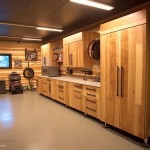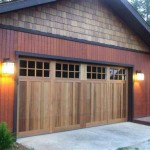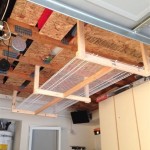Choosing The Right Lighting For Your Garage Floor
The garage, often relegated to a space for parking vehicles and storing tools, can serve a variety of purposes, from a workshop to a home gym. Regardless of its function, adequate lighting is crucial for safety, efficiency, and overall usability. Illumination not only enhances visibility but also contributes to the aesthetic appeal of the space, particularly highlighting the condition and finish of the garage floor. Selecting the right lighting for a garage floor requires careful consideration of factors such as the size of the garage, the intended use of the space, and the type of flooring material.
The primary objective of garage lighting is to provide ample illumination for tasks such as vehicle maintenance, woodworking, or general storage retrieval. Insufficient lighting can lead to eye strain, increased risk of accidents, and difficulty in performing detailed work. Conversely, overly bright or poorly positioned lights can create glare, causing discomfort and reducing visibility. Therefore, a balanced approach is essential to achieve optimal lighting conditions within the garage environment. Considerations should include the brightness of the light source, the color temperature, the type of fixture, and the placement of the lights to minimize shadows and maximize illumination across the garage floor.
Understanding Lumens and Color Temperature
Two key metrics in evaluating lighting options are lumens and color temperature. Lumens measure the total amount of visible light emitted by a light source. A higher lumen rating indicates a brighter light. For a typical garage, a general guideline is to aim for approximately 50 lumens per square foot. This means that a 20x20 foot garage (400 square feet) would require approximately 20,000 lumens in total. However, the specific lumen requirements may vary depending on the height of the ceiling and the nature of the tasks performed in the garage. If the garage is used primarily for storage and basic tasks, a slightly lower lumen output may suffice. If the garage is used as a workshop or for detailed work, a higher lumen output will be necessary.
Color temperature, measured in Kelvin (K), describes the warmth or coolness of the light. Lower Kelvin values (e.g., 2700K-3000K) correspond to warmer, yellowish light, while higher Kelvin values (e.g., 5000K-6500K) correspond to cooler, bluish-white light. For garage lighting, a color temperature between 4000K and 5000K is generally recommended. This range provides a bright, neutral white light that is suitable for a variety of tasks without being overly harsh or causing eye strain. Warmer light (lower Kelvin values) can create a more welcoming ambiance but may not be ideal for detailed work, while cooler light (higher Kelvin values) can appear sterile and uncomfortable for extended periods.
The choice of color temperature can also influence the perceived color of objects within the garage. Cooler light tends to render colors more accurately, which is particularly important when working on projects that require precise color matching. Warmer light, on the other hand, can distort colors and make it difficult to distinguish subtle differences. Therefore, the selection of color temperature should be based on the specific needs and preferences of the individual using the garage.
Types of Garage Lighting Fixtures
Various types of lighting fixtures are available for garage use, each with its own advantages and disadvantages. The most common options include fluorescent lights, LED lights, and incandescent lights. Incandescent lights are the least energy-efficient and have a relatively short lifespan, making them less desirable for garage lighting. Fluorescent lights are more energy-efficient than incandescent lights and provide a brighter, more uniform light. However, they can be susceptible to flickering and may contain mercury, which requires special disposal procedures.
LED lights are the most energy-efficient and longest-lasting option for garage lighting. They consume significantly less energy than incandescent and fluorescent lights, and they can last for tens of thousands of hours. LED lights are also available in a wide range of color temperatures and brightness levels, making them highly versatile. Furthermore, LED lights are instant-on, meaning they reach full brightness immediately, unlike some fluorescent lights that require a warm-up period. While LED lights may have a higher initial cost, their energy savings and longevity make them a cost-effective choice in the long run.
Within each type of lighting technology, there are different fixture styles to consider. Shop lights, which are typically long, linear fixtures, are a popular choice for garages because they provide broad, even illumination. These lights can be hung individually or connected in a series to cover a larger area. Flush-mount fixtures are installed directly on the ceiling and are a good option for garages with low ceilings. Recessed lighting, also known as can lights, is installed within the ceiling and provides a more discreet and aesthetically pleasing lighting solution. Task lighting, such as spotlights or work lights, can be used to provide focused illumination for specific tasks.
Optimizing Garage Floor Lighting Placement
Optimal lighting placement is crucial for maximizing illumination and minimizing shadows on the garage floor. A general rule of thumb is to space light fixtures evenly across the ceiling to provide uniform lighting throughout the garage. The spacing between fixtures will depend on the brightness of the lights and the height of the ceiling. For higher ceilings, brighter lights and wider spacing may be necessary. For lower ceilings, dimmer lights and closer spacing may be required.
In addition to general lighting, task lighting can be used to supplement illumination in specific areas where detailed work is performed. For example, a work light can be positioned above a workbench to provide focused illumination for repairs or woodworking projects. Under-cabinet lighting can be installed beneath cabinets to illuminate countertops and storage areas. Consideration should be given to the placement of task lighting to avoid creating glare or shadows that could hinder visibility.
The color of the garage floor can also influence the effectiveness of the lighting. Lighter-colored floors reflect more light than darker-colored floors, which can improve overall brightness and reduce the need for additional lighting. If the garage floor is dark, consider using brighter lights or adding reflective surfaces to the walls to improve illumination. The type of flooring material can also impact lighting. Shiny or glossy floors can reflect light, potentially creating glare. Matte or textured floors tend to absorb light, which may require more lighting to achieve the desired level of brightness.
Motion sensors can be integrated into the lighting system to automatically turn lights on and off when someone enters or leaves the garage. This not only saves energy but also provides added convenience and security. Dimmers can also be installed to adjust the brightness of the lights, allowing for customization based on the specific needs and preferences of the user. A well-planned lighting system can significantly enhance the usability and functionality of the garage, making it a safer, more efficient, and more enjoyable space.

Best Lighting For Your Garage The Ultimate Guide To Led Lights

Best Led Garage Lights Guide How To Choose Bright Energy Efficient Lighting Revolve

Garage Lighting 101 Everything You Need To Know Designs Of St Louis

The Best Types Of Lights For A Safe And Functional Garage Avalon Home Inspections

The 5 Best Lights For Your Garage Work Suffolk News Herald

Garage Lighting A Comprehensive Guide

How To Choose The Best Led Garage Lights For Optimal Efficiency

The Ultimate Guide To Choosing Best Led Garage Lighting For Your Space Olamled

Garage Lighting Guide Lowe S

Stuff We Use What S The Best Garage Lighting Truth About Cars
Related Posts








